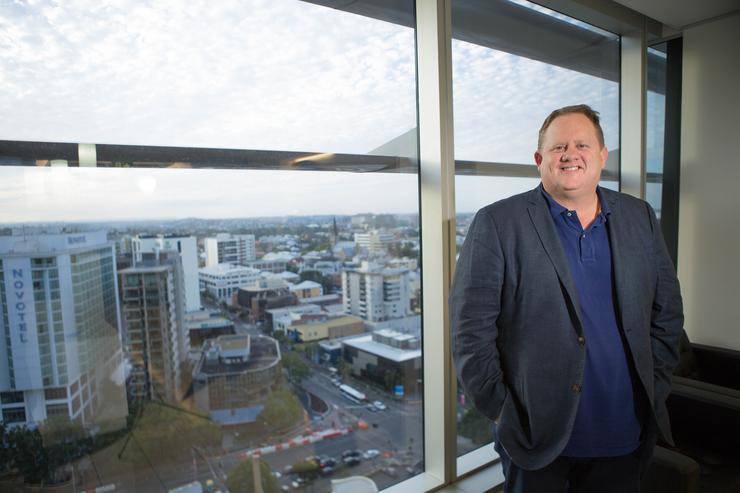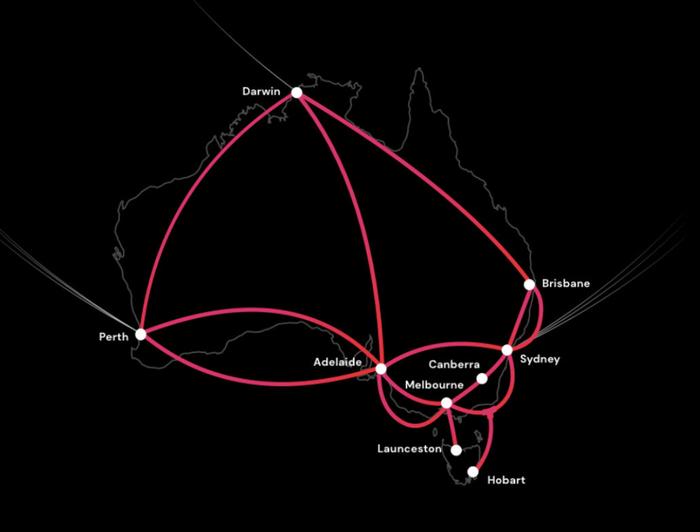
Bevan Slattery (HyperOne)
Australia is about to get another major contender in the fibre network stakes, with a new start-up from serial founder Bevan Slattery gearing up to roll out a 20,000 kilometre hyperscale national fibre network.
Slattery, the founder behind the likes of NextDC, Megaport and Superloop, among other tech and telco players, took to social media early on 11 February to announce the plan.
“Pleased to announce we are building a $1.5 billion new Hyperscale backbone for Australia,” he said in a post on LinkedIn. “The first truly private national backbone with more bandwidth than every other backbone ever built. HyperOne!
“HyperOne will provide greater national resiliency, enable future industries such as space, cloud, satellite, new undersea cable landing points all around Australia.
“Our existing backbone networks are on average 20 years old and the newest network was built back on 2003 when the Nokia 3310 was Australia’s newest phone, 85 per cent of Australian internet connections were still dial-up and ‘Friends’ were still on TV! Built before Cloud, the iPhone 3G let alone 4G/5G. It’s time for Australia to have tomorrow’s network today,” he added.
Slattery’s exuberance does not seem to be entirely unfounded.
The company itself refers to the rollout project as the “largest private digital infrastructure project in Australia’s history”. The National Broadband Network (NBN) is of course the largest government-backed digital infrastructure project in the country’s history.
Broadly, the HyperOne project will see the rollout of a 20,000-plus kilometre, $1.5 billion hyperscale national fibre network that is expected to create more than 10,000 new jobs during construction.
According to Slattery, the hyperscale network will be capable of carrying over 10,000 terabits per second – more traffic than every other national backbone built in Australia’s history combined, he claimed.
Additionally, the company will add more than 1,000 ‘on-ramps’ to the network in regional and remote Australia, in a bid to connect underserved communities and remote areas to HyperOne in what Slattery claims will be a cost effective manner.
 Credit: HyperOne
Credit: HyperOne It is hoped the HyperOne network will, in addition to supporting various industry segments, also provide transmission to local distribution networks such as the NBN and mobile operators.
Indeed, the HyperOne project office has already begun discussions with NBN Co, the Northern Australian Infrastructure Fund, telecommunication companies and various market participants, as well as the federal government and state governments.
“HyperOne is big, bold and way overdue,” Slattery said in a statement. “HyperOne will be the first true private national fibre backbone project connecting major data hubs in every capital city in every state and territory across Australia.
“HyperOne will also create new major interconnection points for more international undersea cables into Australia from Asia and as far as the Americas and Antarctica.
“With the current geopolitical instability in the region there is unprecedented opportunity for Australia to become the region’s leading, secure and stable hub for future industries and jobs,” he added.
Federal Minister for Communications, Urban Infrastructure, Cities and the Arts Paul Fletcher was upbeat about HyperOne’s plans, suggesting it would represent a very significant investment in a new backbone fibre optic transmission network across Australia.
“HyperOne’s planned network would deliver a major boost in data transmission capacity into many cities and towns across Australia, which in turn would open up new economic opportunities, support new industries and generate jobs,” Fletcher said.
Meanwhile, South Australian Premier Steven Marshall claimed to be thrilled that South Australia was going to play a big part in the nation’s first hyperscale national fibre network.
“HyperOne means jobs for South Australians,” Marshall said. “Not only do we already have a huge contingent of high-tech companies working out of Lot Fourteen – we expect to see even more companies base their headquarters here to take advantage of Adelaide’s unique position in this new network.
“This iconic project supports my government’s strong economic plan to invest in new jobs in future industries including space, cybersecurity, defence and agritech,” he added.
At the same time, Northern Territory Chief Minister Michael Gunner also welcomed the announcement of HyperOne saying it would underpin thousands of new jobs in the territory.
“HyperOne will help cement the Territory’s position as Australia’s comeback capital, making Darwin the key point of digital interconnect between South East Asia, the fastest growing digital market on earth and Australia’s east coast,” Gunner said.
“We will be the digital entrance for the rest of Asia into Australia, and we are ready to roll out the red carpet. This will create jobs here in the Territory, as well as opening up considerable economic opportunities and encouraging digital investment in the Territory,” he added.




